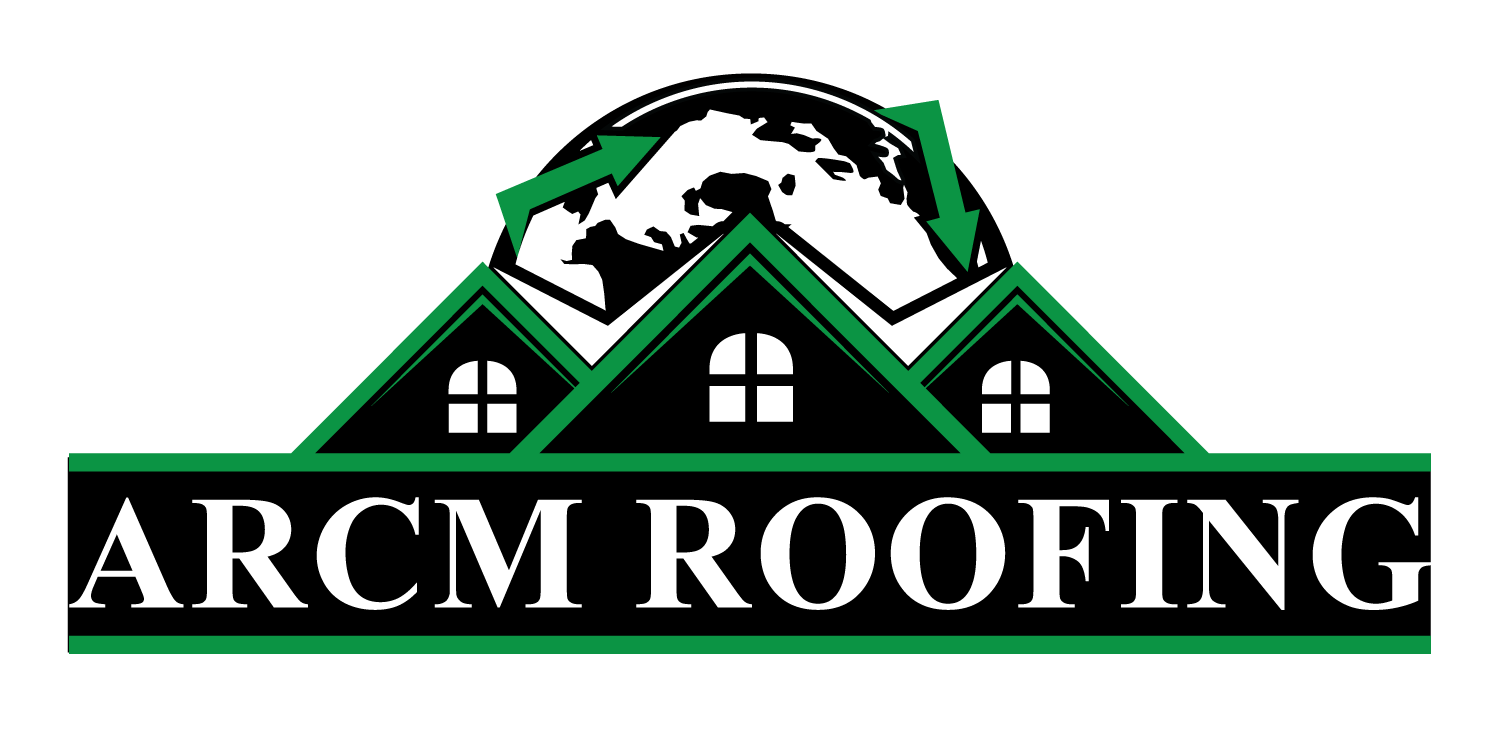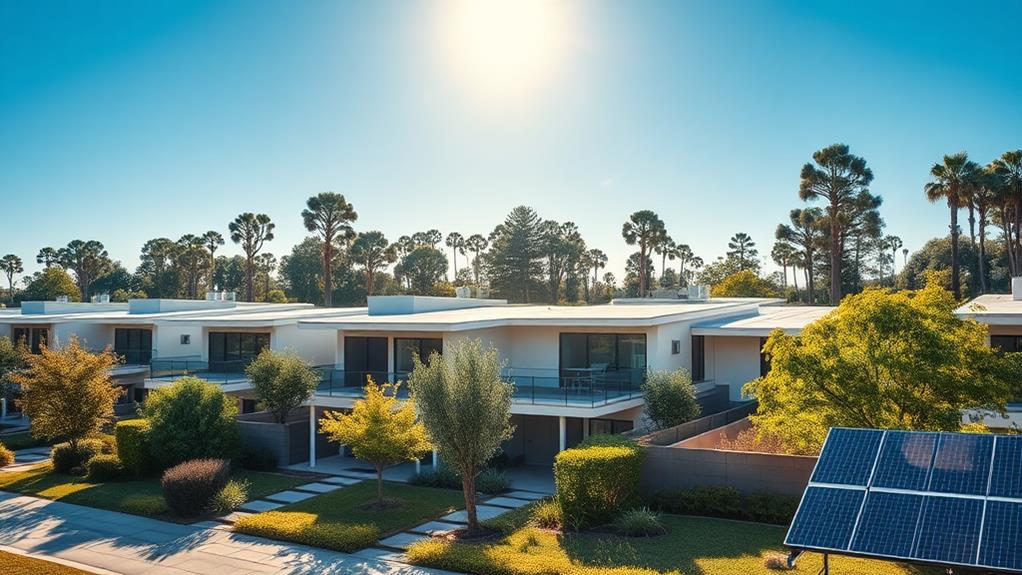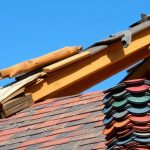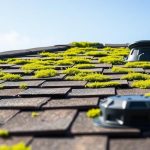Flat roofs are a sophisticated residential roofing option, characterized by their minimal pitch and modern design, offering benefits such as space optimization and energy efficiency. Materials like modified bitumen, EPDM rubber, and PVC membranes enhance performance by providing durability and energy efficiency. These roofs enable green initiatives, supporting rooftop gardens or solar panels, and integrating seamlessly with urban aesthetics. Despite their advantages, flat roofs require meticulous maintenance to manage drainage and structural integrity. Our services in Colorado include expert installations, detailed inspections, and innovative solutions ensuring your flat roof remains functional and stylish. Explore deeper insights into maximizing your home's potential.
Roofing Highlights
- Flat roofs offer modern aesthetic appeal and complement minimalist architectural designs.
- They provide additional usable space for gardens, terraces, or energy-saving solar panels.
- Easy maintenance and installation due to their accessible horizontal layout.
- Risk of drainage issues requires regular cleaning and prompt roof repairs.
- Compatible with energy-efficient enhancements and sustainable living practices.
Flat Roof Definition

Flat roofs are distinctive architectural choices characterized by their minimal pitch, offering unique material options such as modified bitumen, EPDM rubber, and PVC membranes that cater to durability and weather resistance. Additionally, they can be an excellent choice for homeowners who want modern roof designs.
These types of roofs present a variety of advantages, including easy accessibility for maintenance and potential for rooftop gardens or solar panels. However, they also present challenges such as drainage concerns and potential for leaks. Understanding these attributes is vital for homeowners considering flat roofs, ensuring informed decisions that align with both aesthetic and functional goals.
Characteristics of Flat Roofs
When evaluating roofing options for homes, the architectural simplicity of flat roofs often stands out. Characterized primarily by a horizontal or near-horizontal layout, flat roofs diverge from the traditional sloped designs, providing a modern aesthetic that enhances contemporary and minimalist home architectures. This roof style, typically inclined less than 10 degrees, promotes efficiency in design, utilizing every square inch of space beneath the roof itself.
The flat roof's form not only caters to current design trends but also introduces practical benefits, such as the potential to convert the rooftop into an accessible terrace or green space, thus extending living areas and fostering community gatherings.
Structurally, flat roofs are generally less complex, which can lead to reduced construction timelines and costs. They support efficient heating in winter and cooling in the summer by promoting equal temperature distribution across the home, thanks to their minimal surface exposure. As a result, flat roofs offer ease of access for maintenance activities, whether for repair or inspection, enabling homeowners to engage in proactive upkeep without the challenging task of navigating steep inclines.
This accessibility, paired with their modernistic appeal, positions flat roofs as a compelling choice for those valuing both form and function in their living spaces.
Material Options Available
Understanding the material options available for flat roofs is pivotal to maximizing their structural and aesthetic benefits. Selecting the right material can influence not only the durability and longevity of the roof but also how seamlessly it integrates with the overall architectural design of a home.
Common materials include built-up roofing (BUR), modified bitumen, rubber membranes (EPDM), polyvinyl chloride (PVC), and thermoplastic polyolefin (TPO). Each offers unique characteristics suitable for specific environmental and design considerations.
Built-up roofing consists of multiple layers of bitumen and reinforcing fabrics, creating a durable and cost-effective solution that has reliably served for decades. Modified bitumen enhances traditional asphalt with polymers for improved elasticity and longevity, making it suited for areas with extreme temperatures.
EPDM or rubber roofing is prized for its elasticity and resistance to ultraviolet radiation, while PVC provides outstanding durability and reflects sunlight, aiding in energy efficiency. TPO combines the beneficial attributes of rubber and plastic roofing, offering a balance of cost-effectiveness and performance.
Selecting the most fitting material, with careful consideration of climate, maintenance needs, and aesthetic preferences, fosters a sense of belonging and fulfillment, aligning homeowners with their environment and architectural vision.
Advantages and Disadvantages
Why choose a flat roof for your home? The allure of flat roofs extends beyond modern aesthetics to encompass a myriad of practical benefits and some considerations.
A flat roof, defined by its nearly level structure as opposed to the steep incline of pitched roofs, can offer enhanced usable space, providing homeowners the potential to create a rooftop garden, terrace, or additional living area. In urban settings, where traditional green spaces are limited, this possibility cultivates a sense of belonging to a community that values innovative living solutions.
However, this architectural choice is not without its challenges. A significant advantage is the relative ease of installation and maintenance due to its accessibility. Also, the streamlined design could translate to cost savings in construction and materials.
Yet, flat roofs can present drainage issues since they lack the natural runoff provided by sloped roofs. Water pooling may increase the risk of leaks over time, necessitating a vigilant maintenance schedule. Likewise, in areas with heavy snowfall, weight accumulation could pose structural concerns.
In deciding on a flat roof, one must balance these advantages and disadvantages, weighing personal and environmental factors to align this distinctive choice with their home's longevity and harmony.
Benefits

Flat roofs present a unique array of benefits for residential properties, particularly in the context of optimizing space and enhancing energy efficiency. One of the primary advantages is that flat roofs provide homeowners with additional usable space, which can be utilized for gardens, terraces, or solar panels, thereby engaging in both functional and sustainable purposes.
This could be appealing for urban living, where maximizing use of every square foot is indispensable. Additionally, their streamlined appearance aligns with modern architectural trends, offering a sleek aesthetic that complements contemporary home designs.
Space Optimization Potential
Leveraging the unique architectural design of flat roofs, homeowners can tap into unparalleled space optimization potential, transforming this often-overlooked area into valuable, functional living or recreational spaces. This adaptability provides the opportunity to convert an otherwise unused surface into an array of extensions, perfectly blending innovation with practicality.
These flat spaces serve as ideal platforms for rooftop gardens, providing a sanctuary of calm within urban environments and fostering a sense of community through shared green spaces. For those seeking more active uses, a flat roof can be transformed into a personal gym or yoga deck, supporting both physical wellness and mental rejuvenation.
Furthermore, the additional surface can act as an extension of indoor living areas, offering a seamless passage from interiors to exteriors when equipped with appropriate furnishings and design features. It enhances social engagement possibilities by providing a picturesque setting for gatherings, evening dinners, or tranquil retreats.
The versatile nature of flat roofs not only boosts the aesthetic appeal of homes but also aligns with modern living standards demanding efficient use of available space. This aspect of flat roof design caters to the longing for belonging, as it integrates personalized outdoor spaces with community-centric values, enhancing the quality of urban life.
Energy Efficiency Advantages
Maximizing energy efficiency is a standout advantage of incorporating flat roofs into home design, considerably contributing to reduced energy consumption and environmental impact. Flat roofs provide an effective platform for the application of energy-saving technologies such as solar panels and green roofing systems. The expansive surface area of flat roofs offers an ideal base for photovoltaic panels, which harness solar energy efficiently to power household needs. This configuration promotes the generation of renewable energy, reducing reliance on conventional power sources and lowering utility costs.
Furthermore, the insulation component embedded within flat roof systems plays a pivotal role in regulating indoor temperatures. High-quality insulation materials can be seamlessly integrated into the design, thereby minimizing heat transfer. This thermal efficiency cuts down on heating and cooling demands, fostering a consistent and comfortable environment within the home.
Additionally, flat roofs are well-suited for green roof installations, which involve layering vegetation over the roofing surface. This natural insulation not only decreases heat absorption but also aids in creating a healthier microclimate, greatly contributing to atmospheric temperature regulation. Together, these features of flat roofs underscore their role in advancing sustainable living and aligning with the environmentally conscious values shared by the community.
Modern Aesthetic Appeal
In contemporary architecture, the flat roof design undeniably enhances the modern aesthetic appeal of homes, offering sleek and clean lines that complement minimalist styles. The stark simplicity inherent in flat roofs provides a compelling contrast to complex, ornate designs, making them attractive for contemporary homeowners seeking to belong within a community that values modernism and simplicity.
This form of roofing naturally aligns with geometric forms, allowing for expansive views and open floor plans that suit today's architectural preferences.
Furthermore, flat roofs contribute to a streamlined silhouette that many modern architects and homeowners prize for its unique capability to harmonize indoor and outdoor spaces. When coupled with large windows and open spaces, flat roofs emphasize horizontality, crafting an impression of serenity and balance.
Beyond merely visual appeal, these roofs facilitate the creation of rooftop gardens or terraces, appealing to those who yearn for greener urban living—integrating community and nature.
Flat roofs also offer practical benefits, including versatility in design and efficient use of space. This adaptability underscores their growing popularity among those desiring a modern, cohesive environment that reflects a shared appreciation for streamlined aesthetics and practical living solutions.
Maintenance Tips for Flat Roofs
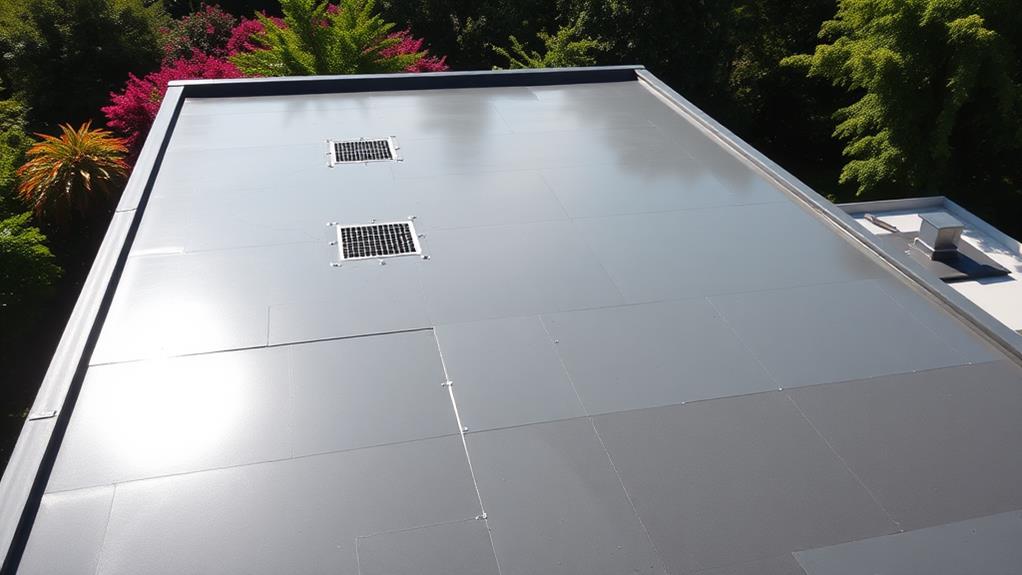
To guarantee the longevity and optimal performance of flat roofs, homeowners should prioritize a comprehensive maintenance routine that incorporates regular inspection schedules, efficient drainage solutions, and careful consideration of roof material longevity. Regular inspections help to preemptively identify potential issues such as cracks or leaks, whereas efficient drainage solutions are critical in preventing water pooling, which can compromise the structural integrity of the roof over time. Additionally, selecting high-quality materials tailored for flat roofs can substantially extend their lifespan, providing homeowners with reliable protection against the elements.
| Maintenance Aspect | Key Benefit |
|---|---|
| Regular Inspection Schedule | Identify potential issues early |
| Efficient Drainage Solutions | Prevent structural water damage |
| Roof Material Longevity | Extend the roof's lifespan |
Regular Inspection Schedule
Establishing a regular inspection schedule for your flat roof is an essential aspect of its maintenance, ensuring longevity and ideal performance. Conducting inspections biannually, particularly in the spring and fall, allows you to address any potential issues before they escalate into costly repairs.
During these detailed assessments, you can check for surface damage, including punctures, blisters, or cracks that may compromise the roof's integrity. Look for standing water, or ponding, which can indicate drainage issues or structural concerns, and inspect all flashings, seams, and joints for any signs of deterioration.
Including gutter cleaning in your inspection routine enhances roof efficiency by preventing the buildup of debris that can lead to water retention and damage. Additionally, maintaining complete records of your roof's condition and any maintenance performed provides a reference point for future assessments and necessary upkeep decisions.
Efficient Drainage Solutions
While flat roofs offer numerous benefits, efficient drainage is critical to prevent water-related damage. Proper drainage systems are indispensable for safeguarding flat roof structures, ensuring water does not pool and compromise the integrity of the roof over time. One must prioritize the installation of high-quality gutters and downspouts, specifically designed to handle large volumes of water swiftly.
The implementation of internal drains, also commonly known as scuppers, can further enhance the efficiency of a flat roof drainage plan by directing water from the surface to designated drainage pathways.
Maintenance of these components is equally important. Regular clearing of debris from gutters, downspouts, and drains prevents blockages and allows rainwater to flow freely. Innovative solutions, such as parapet wall drainage and overflow systems, provide additional layers of protection, diverting excess water effectively and reducing the risk of damaging build-ups.
Additionally, incorporating a slight slope in the roof design aids in natural water runoff. Integrating these detailed drainage solutions not only preserves the roof's integrity but also aligns the homeowner with best practices in modern roofing, contributing to a harmonious and well-maintained abode that members of a conscientious community can admire and emulate.
Roof Material Longevity
A well-maintained flat roof is key to extending its material longevity and guaranteeing its continued performance as a protective building component. Regular inspections are essential; they allow homeowners to detect and address minor issues before they escalate into significant problems.
Debris accumulation can lead to water pooling, which stresses the roofing material. Consequently, it is important to perform routine cleanings to remove leaves, branches, and other obstructions. This practice not only preserves the roof's condition but also assures that the drainage system remains unobstructed, acting as a harmonious element of the roof's overall function.
In addition to routine maintenance, addressing repairs promptly is pivotal for material longevity. Damaged membranes, flashings, and seams should be repaired immediately to prevent water infiltration, which can compromise structural integrity. Depending on the roof's material—whether it's single-ply, modified bitumen, or built-up roofing—specific products and techniques are recommended for repairs to ensure compatibility and effectiveness.
Guaranteeing proper insulation and ventilation will also contribute to preserving the roofing material under various weather conditions. By integrating these proactive measures, homeowners not only maximize their roofing investment but also contribute to a cohesive, secure living environment for themselves and future inhabitants.
Connect With Us
Looking to transform your home with the sleek and modern appeal of a flat roof? Our team of experts is here to guide you every step of the way. We've been serving Denver, Colorado and surrounding areas with quality residential roofing services, and we guarantee quality, durability, and a style that elevates your home's aesthetic.
Whether it's for a new build or a renovation, our commitment to customer satisfaction and transparent pricing will give you confidence in your project. Don't wait to enhance your property — contact us today for a consultation. Call us at (303) 306-8384 and let's make your flat roof vision a reality!
Roofing FAQ
What Materials Are Best for Constructing a Flat Roof?
Choosing suitable materials enhances roof longevity and performance. Ethylene Propylene Diene Monomer (EPDM), Thermoplastic Polyolefin (TPO), and Polyvinyl Chloride (PVC) provide excellent durability and energy efficiency, aligning with current sustainable construction practices.
How Long Do Flat Roofs Typically Last?
The longevity of a roof varies based on material, quality of installation, and maintenance practices. Typically, a well-maintained flat roof can last 20 to 30 years, ensuring that it remains a reliable shelter and community cornerstone.
Are Flat Roofs More Prone to Leaks Than Pitched Roofs?
Flat roof designs generally have a higher susceptibility to leaks compared to pitched roofs, due to drainage challenges. Proper maintenance and vital sealing are indispensable to enhancing longevity and ensuring reliable protection for your cherished living spaces.
What Are the Average Costs Associated With Flat Roof Installation?
The average cost of flat roof installation ranges from $5 to $10 per square foot, influenced by materials, labor, and location. Embracing this cost requires thorough assessment and community dialogue to guarantee collective satisfaction and informed decision-making.
Can Solar Panels Be Easily Installed on Flat Roofs?
Solar panels can indeed be installed efficiently on flat roofs, offering accessibility for maintenance and an unobtrusive appearance. This method fosters communal sustainability by minimizing environmental impact and contributing to the collective energy independence of communities.
